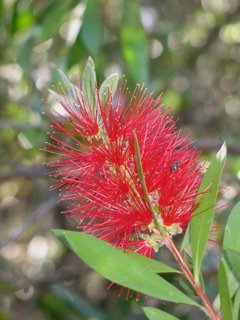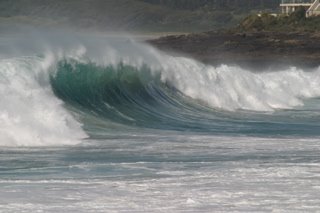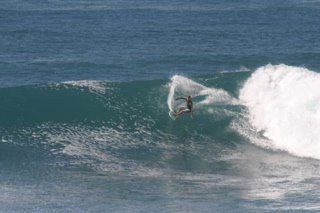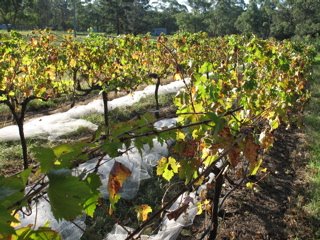Those we have around us on the south coast include the Coral Tree. This is an exotic species from India. It grows into a huge tree with dark green foliage on thorny branches. It has been used on rural properties for years as a shade tree.

Standing under one of these in mid summer you can feel the moisture being pumped out via the transpiration process. It is nature’s air conditioning unit. But it does have its problems. Large heavy branches are notoriously brittle and can snap off and fall without warning. The timber when dry is like balsa wood and completely useless. Although in Australia its seeds are sterile, it can shoot from any branch or twig that falls on the ground. Uncontrolled, the tree can take over pasture and choke up creek beds. It is now considered a weed and is part of land care organisations’ eradication programs. In autumn the leaves change colour and fall. At the same time bright read spiked flowers start to appear until the whole leafless tree is covered. This then becomes a haven to all the honey loving birds, especially lorikeets.
Then there is the Sasanqua which is part of the camellia family and is native to China and Japan. This evergreen bush bursts into flower at the beginning of April and is soon covered with pink flowers buzzing with thousands of bees.

We also have quite a collection of Hibiscus in the garden that continue to flower into winter. Originally a native of Asia, this variety has been hybridised in warmer climates the world over, particularly in Hawaii. The range of colours is stunning. Double and single blooms are possible.

Two native varieties that do well here are the bottlebrush (Callistemon sp.) and Grevillea. Although the former flowers mainly in spring it does have a considerable autumn flush which produces a great number of red bottlebrush shaped flowers.

The latter species is easily hybridised and there are a huge number available for the garden. We have Grevillea “Ned Kelly” here which flowers all year round but is at its best in autumn.

An oddity in our garden is the Burrawang (Macrozamia communis) which belongs to the ancient group of plants known as cycads. Our plants were saved when very small from bulldozers in the near by state forest around 15 years ago.
We now have about ten survivors growing to almost 2m in height. They do not produce flowers but cones. Male and female cones are borne on separate plants and look like pineapples. So far we have only seen female cones on the plants we have.

The seeds that develop from the large female cone turn red or yellow when ripe. They are very high in starch and were eaten by Aborigines after they had washed out the toxic components. We only admire them from a distance as the leathery fonds are quite spikey.
Back on the farm, one of the cows has had a calf and another seems imminent. The new addition seems healthy enough and the mother has plenty of milk. She has taken to hiding her offspring so it took a few days to find it and make sure all was ok. Normally Murray Grey cattle do not have problems calving but since losing a mother last year which necessitated the hand rearing of its calf, it's reassuring to at least keep an eye on the couple for the first few weeks.
Our trip to Europe is all planned. We leave the first week of May. Direct flights to Manchester via Singapore from Sydney, then by road and ferry through the highlands of Scotland for the 3 weeks.
The trip home will be via the USA where we will be staying in Tucson, Arizona for a few months. It is from here, hopefully, my next post shall be.













